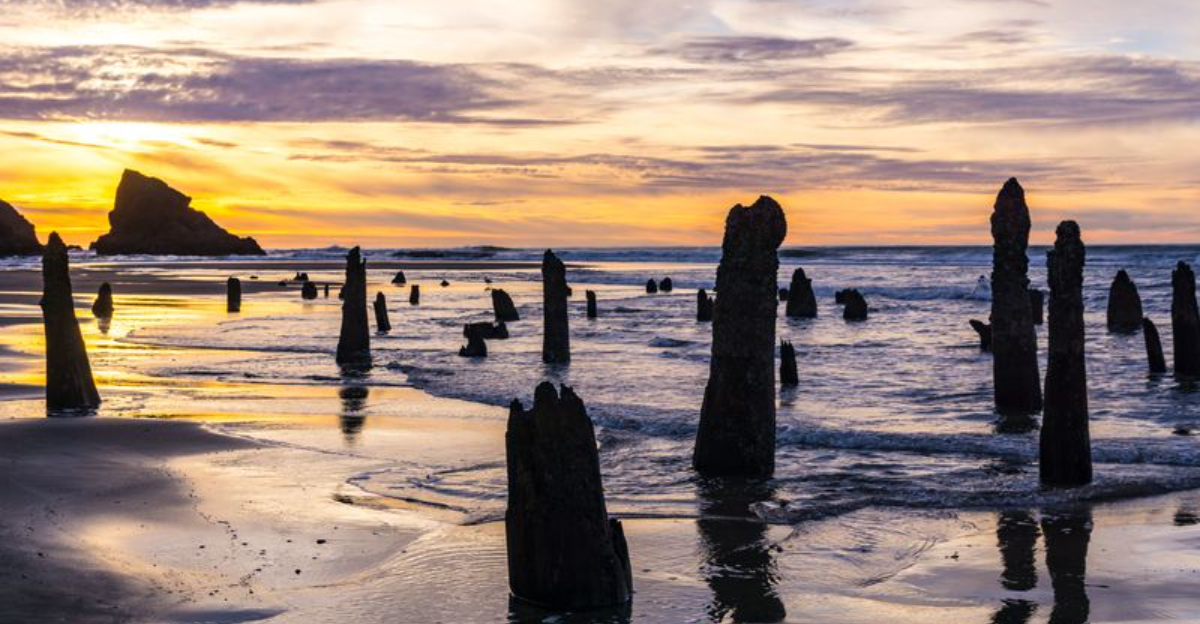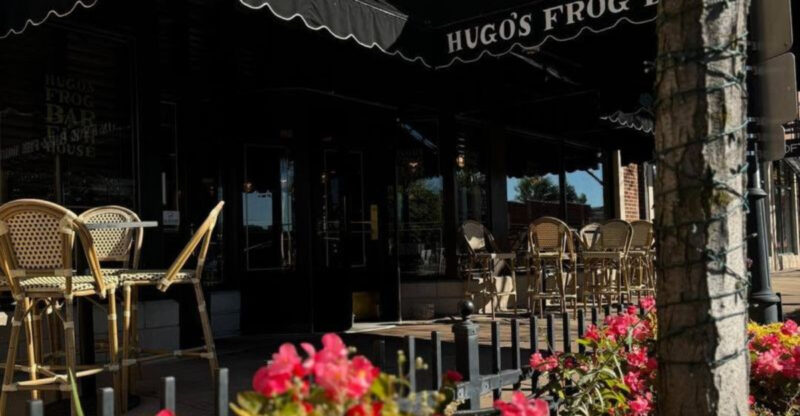10 Oddly Beautiful Natural Wonders In Oregon That Will Blow Your Mind

Oregon’s landscape hides some of nature’s most bizarre and breathtaking creations. From mysterious sinkholes to vibrant painted hills, the Beaver State offers natural phenomena that seem almost otherworldly.
These strange yet magnificent attractions showcase millions of years of volcanic activity, erosion, and geological forces creating scenes that feel like they belong on another planet.
1. Thor’s Well – The Pacific’s Dangerous Drain
Just off Cape Perpetua’s rugged shoreline sits a gaping hole seemingly swallowing the ocean.
This saltwater sinkhole creates a perpetual draining effect as waves crash in and violently recede into the underground cavern. Most spectacular during high tide or storms, Thor’s Well formed when a sea cave’s roof collapsed.
2. Painted Hills – Nature’s Desert Canvas
Rising from eastern Oregon’s landscape, these stratified mounds showcase bands of red, gold, black, and orange that shift colors with changing light and moisture. Each layer tells a story of ancient climates spanning 35 million years.
The hills contain preserved fossils of early horses, camels, and plants from prehistoric rainforests. Walking among these technicolor formations feels like stepping onto Mars, especially during golden hour when the hills practically glow.
3. Tamolitch Blue Pool – The Sapphire You Can’t Touch
Hidden along the McKenzie River Trail lies a pool so intensely blue it appears digitally enhanced. The water’s vibrant sapphire hue comes from its exceptional clarity and the way sunlight penetrates its 30-foot depth.
What makes this spot truly bizarre? The McKenzie River actually disappears underground for two miles before resurfacing here.
4. Crater Lake – The Impossibly Blue Volcanic Cauldron
America’s deepest lake formed when Mount Mazama violently collapsed 7,700 years ago. The resulting caldera filled with snowmelt and rain to create water so pure and blue it seems unreal.
Rising from the center, Wizard Island is actually a cinder cone that formed after the main eruption. Native Americans considered this place sacred, avoiding it for generations. Scientists marvel at the lake’s remarkable clarity; you can sometimes see over 100 feet down.
5. Alvord Desert – The Cracked Mirror Of The Sky
Beneath towering Steens Mountain stretches a surreal cracked playa where you can drive at breathtaking speeds across perfectly flat terrain. This 12-by-7-mile desert receives just 7 inches of rain annually, creating a stark landscape of geometric patterns.
During rare rain events, the playa transforms into a massive mirror reflecting mountains and sky. Land speed records have been set here, while stargazers treasure its light-pollution-free nights where the Milky Way appears close enough to touch.
6. Neskowin Ghost Forest – Ancient Trees Risen From The Dead
Along Neskowin Beach, dozens of 2,000-year-old Sitka spruce stumps emerge from the sand during low tide. These eerie sentinels were suddenly buried by landslides or tsunamis, then preserved by saltwater and lack of oxygen. Normally, wood exposed to ocean would quickly rot away.
Scientists believe a massive earthquake dropped this ancient forest below sea level, preserving it like wooden zombies. The stumps appear and disappear with the tides, creating a haunting, temporary graveyard of trees.
7. Metolius Balancing Rocks – Nature’s Impossible Sculpture Garden
Defying both gravity and common sense, these massive volcanic boulders perch precariously atop narrow pedestals near Lake Billy Chinook. Wind and water erosion sculpted these formations over thousands of years, wearing away softer material while leaving harder cap rocks balanced above.
Local lore claims disturbing these rocks brings bad luck. Geologists remain puzzled by how such massive stones maintain their seemingly impossible positions through earthquakes and weather. The hike to view them rewards visitors with both geological oddities and sweeping canyon views.
8. Proxy Falls – The Vanishing Waterfall
Cascading 226 feet down a moss-covered basalt cliff, this ethereal waterfall doesn’t flow into any visible stream. Instead, the water mysteriously disappears into a porous lava field at the base, creating the illusion of a waterfall flowing into nothing.
Vibrant moss and ferns thrive in the misty microclimate. The surrounding forest burned in 2017, creating a stark contrast between charred trees and the lush waterfall oasis. Photographers particularly love capturing this spot when sunlight creates rainbows in the mist.
9. Crack In The Ground – Walking Inside Earth’s Wound
This two-mile volcanic fissure near Christmas Valley plunges up to 70 feet deep into the earth. Created by cooling lava approximately 1,000 years ago, the crack maintains temperatures 20 degrees cooler than the surface; making it a natural air conditioner in summer.
Ancient pictographs hint that indigenous people sought refuge here during heat waves. Ice forms along the walls even in summer months. The narrow passages sometimes require scrambling over boulders, creating an underground adventure through Earth’s crust.
10. Lava River Cave – The Frozen Underworld River
Oregon’s longest lava tube stretches over a mile beneath the forest floor near Bend. This underground tunnel formed 80,000 years ago when the outer layer of flowing lava cooled while molten rock continued flowing inside, eventually emptying to leave the hollow tube.
Fascinating ice formations appear near the entrance in winter. The absolute darkness inside is so complete that researchers use it to study how sensory deprivation affects human perception.






